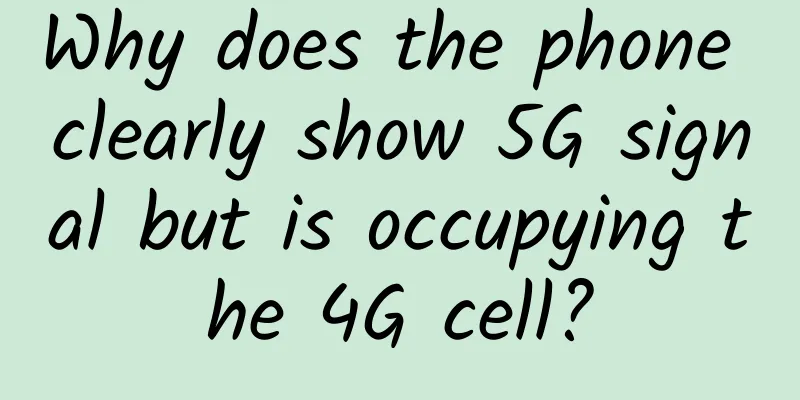Low-power wide-area network LPWAN: Can different factions of technology coexist?

|
The Internet of Things is considered to be the third wave of development of the world's information industry after computers and the Internet. Its emergence will greatly change people's existing living environment and habits. Smart homes, industrial data collection and other scenarios usually use short-distance communication technology, but for wide-range and long-distance connections, long-distance communication technology is indispensable, so LPWAN came into being. Before the emergence of LPWAN, there were already a variety of communication technologies, including short-distance WiFi, Bluetooth, Zigbee, etc., and long-distance 2G, 3G, 4G, etc. However, if these wireless communication technologies are divided according to the two dimensions of power consumption and transmission distance, it can be found that there is still a lack of technology in the range of low power consumption and long distance, and the emergence of LPWAN technology just makes up for this shortcoming. If you want to transmit information wirelessly over long distances, then you have to either increase the signal power or decrease the signal bandwidth. For example: if water is flowing through a pipe and you want to send it farther away from the source, then you either have to increase the pressure of the water (power) or use a narrower pipe (bandwidth), or both. 1. Introduction to LPWAN Low-power wide area network (LPWAN) is a long-distance, low-power wireless communication network. Most LPWA technologies can achieve network coverage of several kilometers or even dozens of kilometers. Due to its wide network coverage and low terminal power consumption, it is more suitable for large-scale IoT application deployment. The first thing to understand is that LPWAN is not a technology, but a combination of various and different forms of low-power, wide-area network technologies. LPWAN has the following main characteristics:
Therefore, LPWAN is an excellent choice for many IoT applications, such as cities or large buildings for smart lighting, smart grids, and asset tracking, as well as sensors and meters that need to be installed and monitored for long periods of time (such as water metering, gas detectors, smart agriculture, and remote door locks). In short, LPWAN is suitable for applications where small amounts of data are transmitted over long distances while the battery life can last for many years. This is the main difference between LPWAN and other wireless network protocols such as Bluetooth, RFID, cellular M2M and ZigBee. Advantages of LPWAN:
More importantly, mesh networks consume large amounts of battery power because each node must constantly receive and repeat RF signals from its neighbors. When sensors scale to thousands, ZigBee or other mesh networks cannot adequately meet the needs of LPWA applications. 2. Different technical schools of LPWAN As the demand for IoT is growing explosively, the battle over IoT technology standards is escalating, especially for LPWAN low-power wide-area networks, which is extremely fierce. LPWAN can be divided into two categories: one is technologies such as LoRa and SigFox that work in unlicensed spectrum; the other is 2/3/4G cellular communication technologies supported by 3GPP that work in licensed spectrum, such as EC-GSM, LTE Cat-m, NB-IoT, etc. 1. Licensed spectrum The licensed spectrum is mainly NB-IoT led by 3GPP, which supports software updates to existing cellular infrastructure, such as upgrading existing LTE and GSM base stations. Reusing existing 3G or 4G spectrum can quickly achieve domestic and international coverage and deployment. (1) NB-IoT and LTE-M NB-IoT (Narrow Band Internet of Things) is a cellular-based narrowband Internet of Things with four major features: wide coverage, low power consumption, low cost and large connections. It is one of the most popular LPWAN technologies. LTE-M, or LTE-Machine-to-Machine, is an IoT technology based on LTE evolution. It is called Low-Cost MTC in R12 and LTE enhanced MTC (eMTC) in R13. It aims to meet the needs of IoT devices based on existing LTE carriers. Specifically, NB-IoT has strong indoor coverage, with a 20dB gain over LTE, which is equivalent to a 100-fold increase in coverage area. NB-IoT focuses on small data volume and low-rate applications, and the device power consumption is very small, with a battery life of up to 10 years. In particular, the use of DRX (discontinuous reception) technology allows the terminal to work only when needed. In terms of cost, NB-IoT simplifies RF hardware, simplifies protocols, and reduces baseband complexity, reducing overall component costs. NB-IoT has potential advantages in smart city applications. The report shows that NB-IoT has better building penetration than LTE-M. On the other hand, LTE-M has higher data rates, which is very important for data-intensive use cases, but chips using LTE-M are usually very expensive. Application scenarios: LTE-M and NB-IoT are complementary low-power IoT technologies. NB-IoT is suitable for use cases with limited data requirements, while LTE-M supports more powerful features, providing higher bandwidth, mobility and LTE voice services. They can both connect directly to mobile networks without the need for Wi-Fi login or Bluetooth pairing. NB-IoT is best suited for simple switchgear, including smart parking meters, smart agriculture sensors, electricity meters, industrial monitors, and building automation, etc. LTE-M is suitable for drones, asset trackers, fleet tracking, smart watches, alarm panels, pet trackers, smart home appliances, patient monitors, utility meters, etc. 2. Unlicensed spectrum LPWAN technologies that use unlicensed frequency bands include Sigfox, LoRa, Weightless, etc. Since they use public unlicensed frequency bands, they have a low entry threshold, are simple to build, and have a faster commercialization process. (1) LORA The LORA (Long Range Radio) Alliance is an open, non-profit organization that aims to promote and promote the LPWAN technology ecosystem. It has about 400 member companies in North America, Europe, Africa and Asia, and its founding members include IBM, MicroChip, Cisco, Semtech, Bouygues Telecom, Singtel, KPN, Swisscom, Fastnet and Belgacom. LoRaWAN is an open standard network layer managed by the LoRa Alliance. However, it is not truly open, as the underlying chips that implement the complete LoRaWAN stack are only available through Semtech. LoRa is characterized by long distance (1-20km), tens of thousands or even millions of nodes, battery life of 3-10 years, and data rates of 0.3-50kbps. LoRa's sub-GHz frequency band allows it to communicate over long distances with lower power consumption, and can be powered by batteries or other energy collection methods. At the same time, the lower data rate also extends battery life and increases network capacity. In addition, LoRa signals have strong penetration into buildings. Application scenarios: The biggest feature of LoRa is that it can transmit farther than other wireless methods under the same power consumption conditions, achieving the unity of low power consumption and long distance, and expanding the communication distance by 3-5 times compared with traditional wireless RF communication under the same power consumption. LoRa's application scenarios include smart agriculture: low-power and low-cost sensors, no communication charges, and multiple nodes; industrial informatization: in factory automation manufacturing and production, LoRa's low-cost sensors are equipped with low-power and long-life batteries and are very suitable for tracking equipment and monitoring status; logistics tracking: An important requirement of the tracking or positioning market is the battery life of the terminal. LoRa's communication is more stable than NB-IoT when moving at high speed. (2) SigFox Founded in 2009, SigFox is a French-based company (Sigfox is both the company name and the solution). SigFox has a large ecosystem of suppliers, including Texas Instruments, Silicon Labs, and Axom. SigFox was born to build wireless networks for the Internet of Things. Its advantage is that it does not have the burden of traditional wireless networks. It reduces costs, has wide coverage, and increases speeds based on the characteristics of the Internet of Things. It is mostly applicable to overseas smart manufacturing and other scenarios. SigFox uses proprietary technology to achieve a longer transmission range at a lower modulation rate. SigFox operates in the 868MHz and 902MHz ISM bands, consuming very narrow bandwidth or power consumption. Therefore, the best application scenario for SigFox is system applications that only need to send small, infrequent data bursts, such as parking sensors, water meters, and smart trash cans. Its disadvantage is that it is severely limited when data is sent back to the sensor/device (downlink capability), and there will also be signal interference issues. SigFox has been very successful in Europe. SigFox has its own base stations around the world and has launched networks in nearly 60 countries and regions. This includes 25 major European countries except Russia, and many Western European countries have achieved full coverage. It also has coverage in North America and China. Latin America is the area with the best SigFox network coverage. Data shows that SigFox's coverage in Brazil is far ahead of other LPWAN technologies. Both LoRa and Sigfox have the characteristics of long distance and low power consumption, which can extend battery life and achieve large-scale information transmission. They both use the unlicensed Sub-1GHz ISM band and do not require additional licensing fees. The number of daily transmissions of LoRa and Sigfox is limited, which is suitable for use in areas where there is no real-time communication demand. (3) Ingenu Ingenu (formerly On-Ramp Wireless) has developed a two-way solution based on years of research, implementing a proprietary direct sequence spread spectrum modulation technology called RPMA (Random Phase Multiple Access), which is designed to provide high-capacity, secure and wide-range interconnect solutions in the 2.4GHz band. In the United States, a single RPMA access point can cover an area of 176 square meters, which is much larger than both Sigfox and LoRa standards. It has minimal overhead, low latency and broadcast capabilities, and can send commands to a large number of devices at the same time. The hardware, software and other functions are limited to those provided by the company, which wants to build its own public and private networks dedicated to machine-to-machine communications. (4) Symphony Link Link Labs is a member of the LoRa Alliance and therefore uses LoRa chips. However, Link Labs does not use LoRaWAN, but instead builds a proprietary MAC layer (software) on top of Semtech's chip Symphony Link. Link Labs was founded in 2013 by former members of the Johns Hopkins University Applied Physics Laboratory and is based in Annapolis, Maryland. Symphony Link adds several important connectivity features compared to LoRaWAN, including guaranteed message reception, over-the-air firmware upgrades, removal of duty cycle restrictions, repeater functionality, and dynamic range. (5) Weightless SIG The Weightless SIG (Special Interest Group) was founded in 2008 with the mission of standardizing LPWAN technologies. There are five "promotion group members" including Accenture, ARM, M2COMM, Sony Europe and Telensa. The Weightless SIG is the only true open standard that operates in unlicensed spectrum below 1 GHz. There are three versions of Weightless that can be used for different purposes:
Among them, Weightless-N and Weightless-P are more popular because Weightless-W has a shorter battery life. Nwave's Weightless-N is very similar in functionality to SigFox, but has a better MAC layer implementation. It claims to use "advanced demodulation techniques" that allow its network to coexist with other radio technologies without creating additional noise. Like SigFox, it's best suited for sensor-based networks, temperature readings, tank level monitoring, smart metering, and other such applications. The Weightless-P standard uses FDMA+TDMA modulation in a narrow 12.5 kHz band (larger than SigFox but smaller than LoRa). It also has adaptive data rates, similar to Symphony Link (200 bps to 100 kbps). Sensitivity is very high, -134 dBm at 625 bps, and supports PSK and GMSK modulation. Weightless-P makes sense for private networks, more complex use cases, and situations where controlling uplink and downlink data is important. Development kits for Weightless-P are just starting to become available now. 3. Deployment Status of Different Factions’ Technologies Ovum Research Institute's IoT & LPWAN Deployment Report for the fourth quarter of 2019 shows that as of now, the number of LPWAN deployments announced worldwide, including licensed and unlicensed spectrum, has reached 501. LoRa is still the most widely used technology in existing networks, but NB-IoT is gradually catching up. Unlicensed spectrum LoRa technology dominates commercial existing network deployments, accounting for almost one-third of the market share (about 30.3%). NB-IoT technology ranks second, with 89 commercial networks as of the end of the third quarter of 2019. Despite the growth in licensed spectrum LPWAN deployments, unlicensed spectrum LoRa is expected to maintain its leading position. LoRa chipset provider Semtech said in a recent briefing that it now has 14 national public LoRa networks in 10 countries around the world, and there are 50,000 LoRa technology developers worldwide. The technology has more than 100 million terminal nodes (including private networks) and is supported by 120 service providers worldwide. But the situation is different in China. On December 13, 2017, the Radio Management Bureau of the Ministry of Industry and Information Technology issued the "Technical Requirements for Micro-Power Short-Range Radio Transmitter Equipment (Draft for Comments)". At the same time, my country completed the complete submission of the IMT-2020 (5G) candidate technology plan, in which NB-IoT technology was officially included in the 5G candidate technology set. However, LoRa does not have a licensed frequency band in my country. In terms of chip R&D and supply, there is only one LoRa chip manufacturer, Semetch, which is an American company, while mainstream chip manufacturers around the world can provide NB-IoT commercial chips. From this perspective, it is more advantageous to develop NB-IoT. As NB-IoT becomes the mainstream technology of 5G Internet of Things and domestic regulations on LoRa operating frequency bands, the future development of LoRa is likely to be affected, but it is still unknown whether companies will slow down the deployment of LoRa. IV. Conclusion From the perspective of evolution, the current trend of IoT access technology towards low power and wide coverage is becoming increasingly obvious. In the future, 5G is expected to shake up the entire LPWAN landscape, with its low latency, low power consumption and high data transmission rate characteristics that were previously unattainable. 3GPP is also considering allowing 5G technology to operate in unlicensed frequency bands (especially 3.5 GHz, 5 GHz and 60 GHz), which has a huge impact on unlicensed LPWAN. In general, each LPWAN protocol has its own characteristics, and the future development trend will be more of "complementary" rather than "substitution". |
>>: 5G is eating into Wi-Fi traffic
Recommend
What are PHP streams? Let's talk about the streams you have been using but have ignored
definition The purpose of streams is to use a uni...
SD-WAN is about to dominate edge networks
Network transmission is like playing a team battl...
Application of 5G in the Public Sector of Future Smart Cities
The integration of 5G technology is expected to s...
Popular understanding of the seven-layer network protocol
[[256704]] The seven layers of OSI are briefly in...
Foreign media attention: China completes 5G base station construction target ahead of schedule
Foreign media said that the stay-at-home lifestyl...
5 false truths about 5G mobile phones, don't be fooled anymore
[[360004]] Although some things are real, they ar...
Big news! The three major operators jointly released the "5G Message White Paper"
This article is reproduced from Leiphone.com. If ...
DiyVM: 50 yuan/month KVM-2GB/50GB/5M/Hong Kong CN2 & Japan & US data centers available
In the past 2022, DiyVM has made a series of chan...
Will it be long before US telecom giant AT&T shuts down its 2G network in China?
As 4G networks become more popular, many operator...
Want to be a data scientist? See if you have these 5 qualities
【51CTO.com Quick Translation】 Data science career...
Before 5G mobile phones become popular, these problems must be solved first
Although information about 5G has attracted a lot...
5G Industry In-depth Report 1: China's main technology becomes the 5G communication coding standard
Polar code promoted by Chinese enterprises such a...
If companies don’t rise in automation, they will sink in automation.
Enterprises are constantly seeking to grow and tr...
LOCVPS: Hong Kong Cloud/Los Angeles Light Package is online, KVM monthly payment starts at 29.6 yuan
LOCVPS is a long-established Chinese VPS service ...
Data roaming is cancelled. China Mobile, China Unicom and China Telecom, the three major operators, said that international roaming fees will continue to be reduced.
Starting from July 1, the three major operators o...









